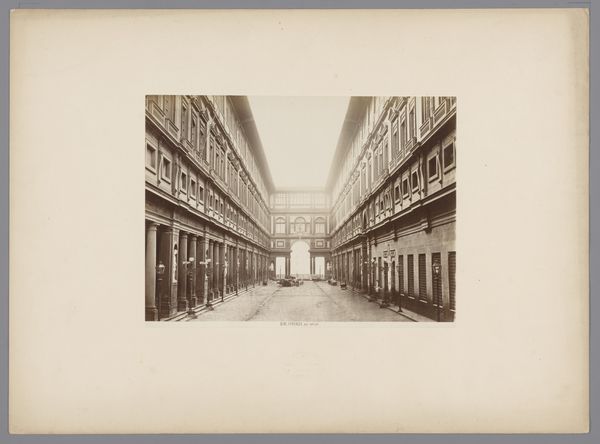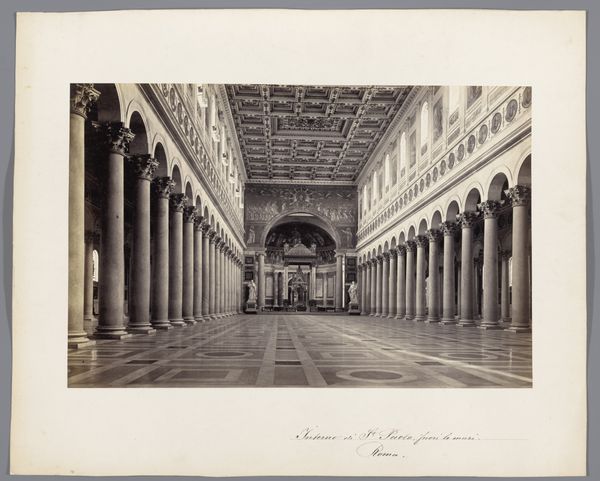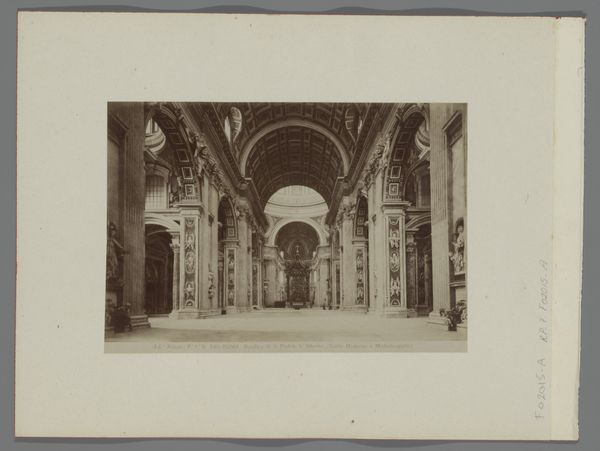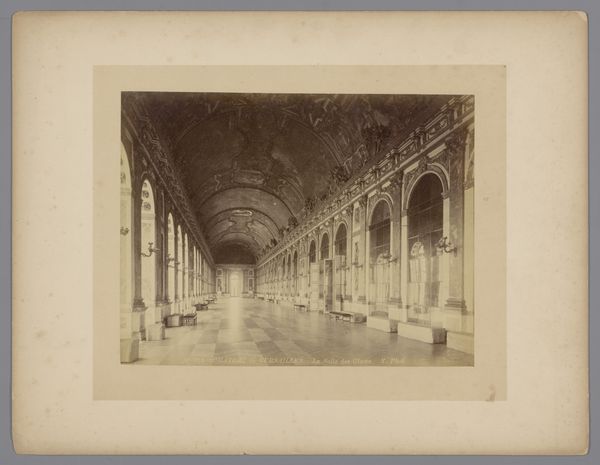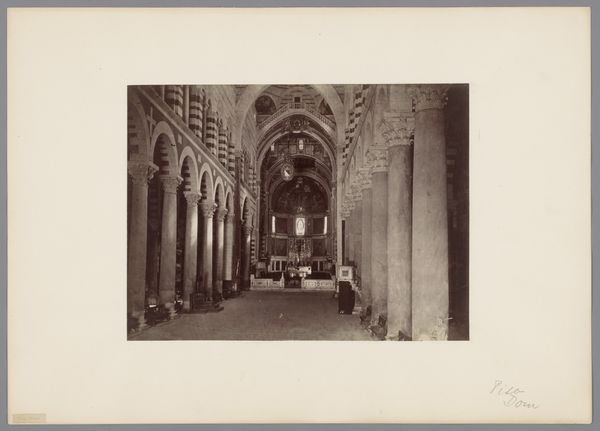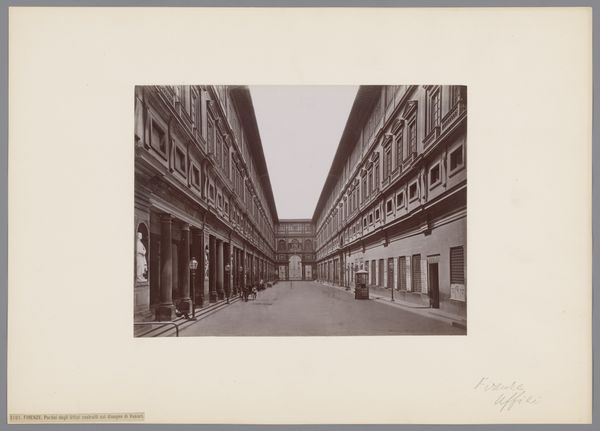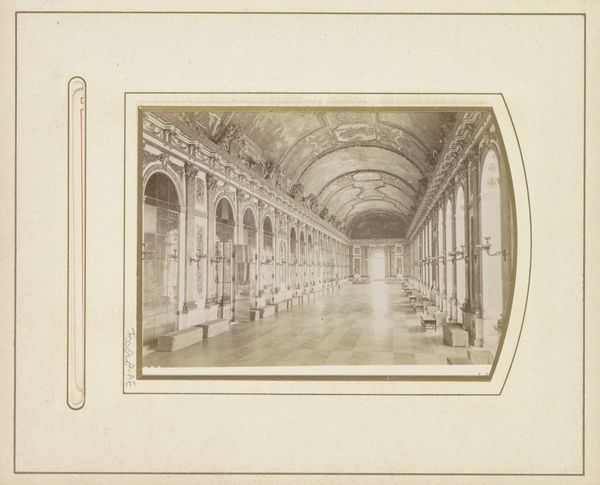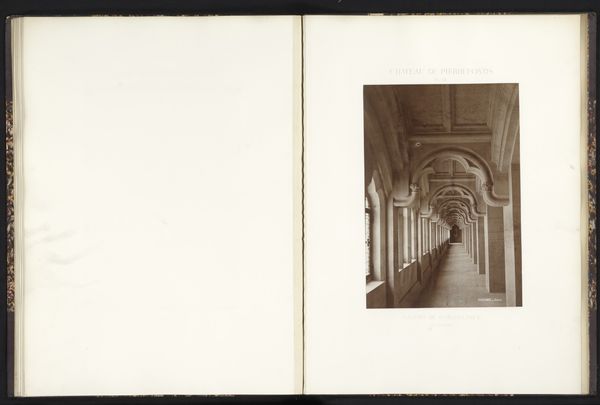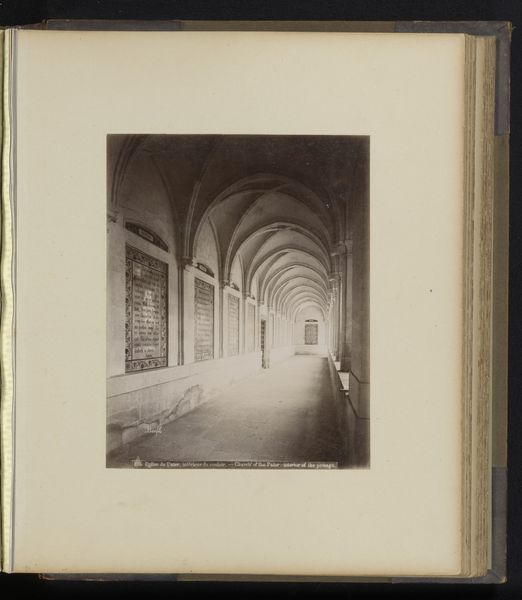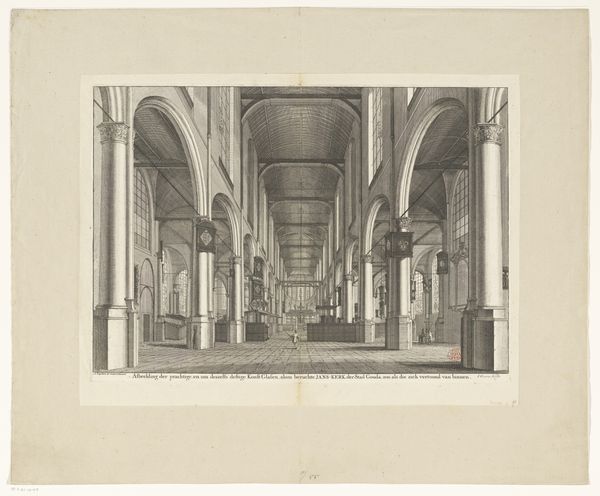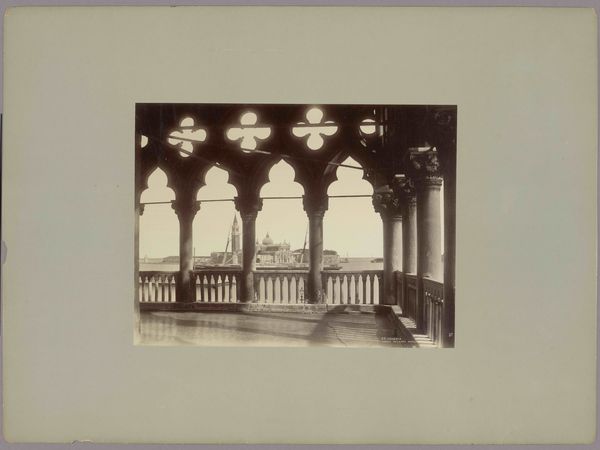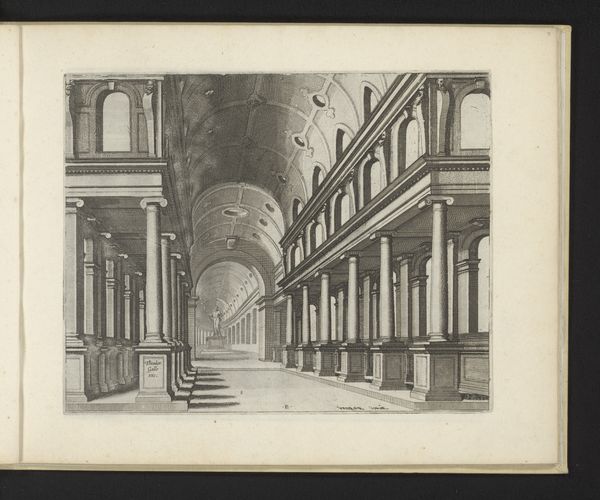
print, photography, architecture
#
photo of handprinted image
# print
#
landscape
#
photography
#
romanesque
#
geometric
#
architecture
Dimensions: height 317 mm, width 445 mm
Copyright: Rijks Museum: Open Domain
Editor: We're looking at "Interior of Saint Paul Outside the Walls in Rome, Italy," a photograph, likely a print, by Carlo Brogi, sometime between 1881 and 1900. The receding lines of columns are just breathtaking, it gives an overwhelming feeling of depth and grandeur, although it's a little dark and hard to make out details. How do you interpret the effect this image might have had on viewers at the time? Curator: The photograph is quite revealing about the relationship between art, the church, and public perception in the late 19th century. It serves less as an objective document, and more as an ideological instrument. Photography was relatively new then, and this image presented a romanticized, almost theatrical view of religious power. Note how the human figures are dwarfed. What effect does that have, do you think? Editor: It makes the church seem all-powerful, I guess, or maybe the divine power it houses. Kind of intimidating. Curator: Precisely. These images were often commissioned by institutions like the church, which used photography to reinforce its authority and to showcase its splendor to a wider audience. Also, consider the implicit message about colonialism. Churches displayed imagery intended to legitimize both religious and imperial dominance to those who would have no possibility to view the physical space captured by Brogi in Italy. How does this influence our understanding of its original reception, compared to now? Editor: Well, today we might see the staged nature of it, or its propaganda aspects, but back then people might have just accepted it at face value, as truth or documentation of reality. Curator: Exactly. The photographer is acting as an agent of cultural power. It makes you think about how photography and power were intertwined right from the start. Thanks for sharing your insight with me today! Editor: Thanks for helping me to view the cultural context and interpret the work on a deeper level!
Comments
No comments
Be the first to comment and join the conversation on the ultimate creative platform.
